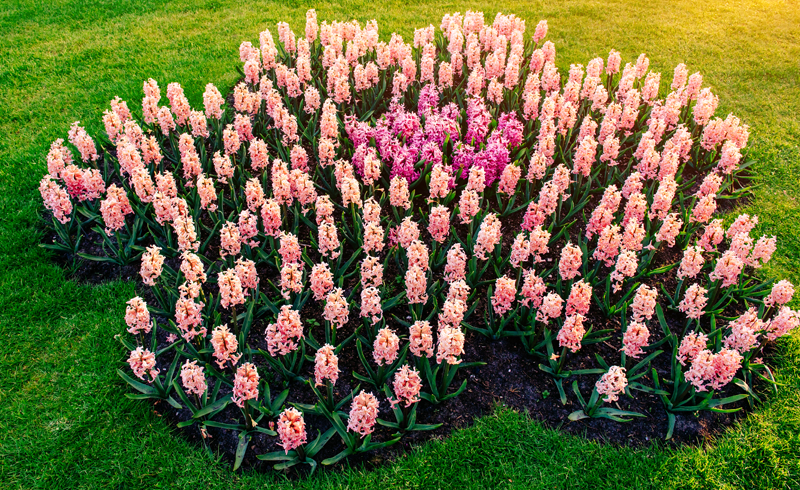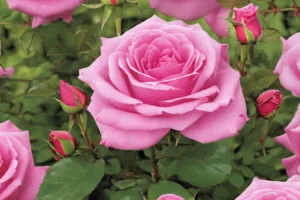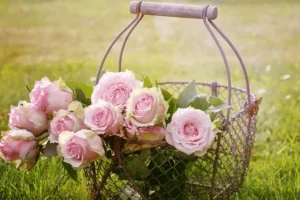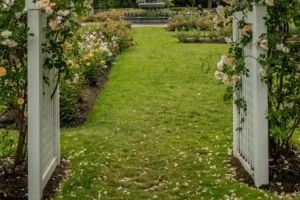
A garden, with its vibrant flowers and lush greenery, is often seen as the heart of a home’s outdoor space. It’s where nature meets nurture, where careful planning meets wild beauty. On the other hand, a lawn serves as the canvas upon which this garden art is painted. A well-maintained lawn complements the garden and provides a serene backdrop, making the colors pop and the designs stand out. Together, they create a harmonious blend of aesthetics and function, offering homeowners a place of relaxation, play, and admiration.
The Harmony Between Flower Beds and Green Lawns
While gardens dazzle with variety and color, lawns provide continuity and balance. Think of the lawn as the stage where the garden performs. It’s the space that allows the garden to breathe and its elements to be showcased. However, achieving this harmony requires understanding and effort. It’s not just about planting flowers or mowing the grass; it’s about designing a space where each complements the other. This post aims to guide garden enthusiasts on cultivating a garden and lawn that coexist and thrive together, creating a harmonious outdoor sanctuary for all to enjoy.
Understanding Your Garden’s Potential
Assessing Your Garden Space
Every garden, regardless of size or location, has unique potential. To unlock this potential, one must first assess the garden space. Start by observing the amount of sunlight each area receives, the soil quality, and the land’s natural flow. For instance, areas with ample sunlight might be perfect for sun-loving plants, while shaded corners could be ideal for ferns or hostas. Understanding the microclimates within your garden can significantly influence the plants you choose and where you place them. By aligning your garden design with the natural attributes of your space, you can create a more sustainable and thriving garden.
The Role of Soil Quality
Soil is the foundation of any garden. Its quality directly affects the health and vigor of the plants. Plants have different soil needs, which can significantly impact your gardening success. Start by conducting a simple soil test to determine its type (sandy, loamy, clayey) and pH level. This will give you a clearer picture of which plants best suit your garden and if any soil amendments are needed. For instance, consider adding organic matter to improve drainage if you have heavy clay soil. On the other hand, sandy soils benefit from compost to enhance water retention. You set the stage for a flourishing garden by catering to the soil’s needs.
Designing Your Garden Beds
The Art of Garden Bed Shapes
The shape of your garden beds can significantly influence the overall aesthetic and functionality of your garden. Traditional rectangular or square beds offer a classic look and are often easier to maintain due to their straight edges. However, curvilinear or circular beds might be the way to add a whimsy or natural flow.
These shapes can soften the garden’s appearance and create a more organic feel. When designing, consider the viewing angles. For instance, a circular bed might be best appreciated from an elevated viewpoint, while a winding bed can guide visitors through your garden, creating a journey of discovery. The key is to choose a shape that complements your garden’s size, style, and purpose.
Incorporating Height and Depth
A garden bed incorporating varying heights and depths can create a dynamic visual interest. Start by considering the mature height of the plants you wish to include. Taller plants, like sunflowers or certain ornamental grasses, can act as a backdrop, medium-height plants can fill the middle ground, and ground covers or shorter plants can grace the front. This tiered approach maximizes the visual appeal and ensures that each plant receives adequate sunlight.
Additionally, consider incorporating raised beds or sunken gardens. Raised beds can provide better soil control and drainage, while sunken gardens can create a unique microclimate, potentially allowing for a broader range of plant choices. By playing with height and depth, gardeners can craft a multi-dimensional space that captivates and delights.
Organizing for Aesthetics
Color Coordination in the Garden
When creating a visually appealing garden, color plays a pivotal role. Think of your garden as a canvas and the plants as your paint. Start by choosing a color palette that resonates with you. Some gardeners prefer soft pastels for a calming effect, while others might opt for vibrant and bold colors to create a lively atmosphere. Once you’ve decided on a palette, consider the bloom time of your chosen plants.
Aim for a staggered blooming schedule so that there’s always a splash of color in your garden throughout the growing season. Remember, foliage can also add color, not just flowers. Plants with variegated or colored leaves can provide visual interest even when not blooming. By thoughtfully coordinating colors, you can ensure your garden remains a feast for the eyes year-round.
Texture and Form: Beyond Color
While color dominates garden aesthetics, texture and form should be noticed. These elements can add depth and contrast to your garden. For instance, the feathery fronds of ornamental grasses can soften the look of a bed filled with the rigid structure of succulents or spiky plants.
Similarly, the broad leaves of hostas can provide a stark contrast to the needle-like foliage of rosemary or lavender. When selecting plants, consider how their textures and forms will play off one another. A mix of different shapes – spiky to rounded and fine to coarse – can create layers of visual interest. By paying attention to these often-overlooked details, gardeners can elevate their green spaces’ overall look and feel, making them beautiful and intriguing.
Lawn Care Basics for a Lush Green Carpet
Soil Health: The Foundation of a Great Lawn
Every beautiful lawn starts from the ground up, quite literally. The health of the soil plays a crucial role in determining how lush and green your lawn will be. Before planting or reseeding, it’s essential to test the soil’s pH level. Lawns typically thrive in slightly acidic to neutral soil (pH 6.5 to 7.5). Certain nutrients become unavailable to the grass if the pH is too high or too low, affecting its health and appearance.
Amending the soil with lime or sulfur can help adjust the pH to the desired level. Additionally, regular aeration can prevent soil compaction, ensuring that water, air, and nutrients can easily reach the grassroots. By giving your lawn a strong foundation, you set the stage for a thick, vibrant green carpet that’s the envy of the neighborhood.
Watering, Mowing, and Fertilizing: The Trifecta of Lawn Maintenance
Watering, mowing, and fertilizing form the core of lawn care practices. It’s better to water deeply and infrequently rather than little and often when watering. Deep watering encourages grass roots to grow deeper into the soil, making the lawn more drought-resistant. Early morning is the best time to water, as it reduces evaporation and prevents prolonged moisture on grass blades, which can lead to diseases. Mowing is equally vital.
Regular mowing keeps the lawn looking neat, but it’s essential not to cut the grass too short, as it can stress the grass and make it more susceptible to pests and diseases. A general rule of thumb is to only remove one-third of the grass blade in a single mowing. Lastly, fertilizing provides the lawn with essential nutrients that might need to be readily available in the soil.
A slow-release granular fertilizer can feed the grass over time, ensuring it remains green and healthy throughout the growing season. By mastering these three practices, gardeners can ensure their lawn remains a lush and vibrant centerpiece in their garden landscape.
Seasonal Lawn Care
Spring: Awakening and Prepping
Spring is when your lawn awakens from its winter slumber, and it’s eager for some TLC. As temperatures rise, you’ll notice the first green shoots pushing through. This is the perfect time to give your lawn a good rake, removing any thatch and moss that might have accumulated over the winter months. Raking cleans the lawn and helps to aerate the soil, allowing it to breathe.
Once you’ve cleared away the debris, it’s time to consider feeding your lawn. Using a spring lawn fertilizer rich in nitrogen will give your grass the nutrients it needs to kickstart its growth and achieve that lush green look. Remember, spring is also an ideal time to address any bald patches in your lawn. Overseeding these areas will ensure a uniform appearance as the season progresses.
Summer: Maintenance and Vigilance
Summer brings warmth and sunshine but can also bring challenges for your lawn. With rising temperatures, ensuring your lawn gets adequate water is essential. If you’re experiencing an arid summer, consider watering your lawn deeply once or twice a week rather than a light sprinkle daily. This encourages the roots to grow deeper, seeking moisture and making the grass more resilient.
Mowing becomes a regular activity in summer. However, raising the mower’s cutting height during extremely hot periods is wise to reduce stress on the grass. Also, please look for any signs of pests or diseases. Summer is when many lawn problems, like grubs or fungal diseases, become more apparent. It’ll prevent them from escalating quickly.
Autumn: Preparing for the Chill
As the days shorten and temperatures drop, your lawn prepares to go dormant for the winter. But before it does, there’s work to be done. Autumn is the best time to aerate your lawn, mainly if it’s heavily used or prone to thatch buildup. Aeration involves making small holes in the lawn to allow air, water, and nutrients to penetrate the grass roots. This helps the roots grow deeply and produce a stronger, more vigorous lawn.
After aeration, consider applying a fall lawn fertilizer. Unlike spring fertilizers, autumn ones are low in nitrogen but high in potassium, which helps strengthen the grassroots and prepare them for winter. If you’ve had issues with moss or thatch, autumn is also an excellent time to apply a moss killer and give the lawn another rake.
Winter: Rest and Observation
Winter is the time for your lawn to rest, but that doesn’t mean you should completely forget about it. While mowing and watering are generally unnecessary during these colder months, keeping the lawn free from heavy objects or prolonged wetness can cause damage or disease. If snow falls, avoid walking on your lawn too much, as this can compact the soil and damage the grass beneath.
It’s also an excellent time to inspect your lawn tools, ensuring they’re clean and sharp for the upcoming spring. While the grass might be dormant, winter is an excellent opportunity for planning. Please look at any changes or improvements you’d like to make to your lawn or garden in the coming year and prepare for them.
Integrating Garden Beds and Lawns
Harmony in Design
When planning a garden, it’s essential to consider how the garden beds and the lawn will coexist. The key is to create a harmonious design where both elements complement each other. Start by visualizing the flow of your garden. Think of the lawn as a canvas and the garden beds as artwork that adds color, texture, and depth.

The shape of your garden beds can be geometric, following straight lines for a more formal look or curved edges for a natural, organic feel. The choice often depends on the overall aesthetic you’re aiming for. For instance, a cottage garden might benefit from irregularly shaped beds, while a minimalist garden might look best with straight lines and angles.
Transitioning Smoothly
The transition between the garden beds and the lawn should be smooth and seamless. One way to achieve this is by using border plants or ground covers that gradually blend the garden bed into the lawn. This softens the edges and creates a cohesive look. Another technique is to use hardscaping elements like stone or brick edging. Not only does this provide a clear boundary between the bed and the lawn, but it also adds an architectural element to the garden.
When mowing, these hard edges make navigating the garden beds easier without damaging the plants. Additionally, consider the height transition. Starting with low-growing plants at the edge of the bed and gradually moving to taller plants towards the back can create a sense of depth and interest.
Practical Considerations
While aesthetics are crucial, practicality should be noticed. Ensure enough space between the garden beds and the lawn for maintenance activities. For instance, you should be able to mow the lawn without damaging the plants or access the beds for weeding and planting without stepping on the grass. Also, consider the water needs of both areas.
Garden beds might have plants that require more frequent watering than the lawn. Please ensure that your irrigation system, if you have one, is set up to cater to these different needs. Drip irrigation might suit garden beds, while sprinklers might be best for lawns.
Enhancing Biodiversity
Integrating garden beds and lawns can also enhance the biodiversity of your garden. The lawn offers open spaces, which can benefit specific wildlife, while the garden beds provide food and shelter for various insects and birds. By having diverse plantings in your garden beds, including native plants, you can attract beneficial insects that will help control pests.
Birds, attracted by plants and insects, can further aid in keeping pest populations in check. This symbiotic relationship between the lawn, garden beds, and wildlife creates a thriving ecosystem in your backyard.
Creating Focal Points
The Essence of a Focal Point
In gardening and landscaping, a focal point is akin to the main character in a story. It’s that standout element that draws the eye and anchors the entire design of your garden or lawn. Whether it’s a striking plant, a piece of garden art, or a serene water feature, a focal point adds depth and interest to your outdoor space. For the average gardener, consider it that “wow” factor or the centerpiece that guests will be drawn to and remember long after they leave. It’s not just about aesthetics; a well-placed focal point can also guide visitors through your garden, leading them on a journey of discovery.
Choosing the Right Focal Point
The choice of a focal point often depends on the size of your garden and your personal preferences. For smaller gardens, it might be a brightly colored bench or a unique plant with captivating blooms. It could be a gazebo, pond, or statue in more significant landscapes. When selecting a focal point, could you consider the size of the garden?
It should stand out but not overwhelm the space. Also, think about its color, texture, and form. For instance, a red Japanese maple might be a perfect focal point in a green-dominated garden due to its contrasting color and delicate leaves. On the other hand, a stone sculpture might bring a touch of elegance and permanence to a cottage garden. Remember, the focal point should reflect your style and complement the overall theme of your garden.
Positioning for Maximum Impact
Once you’ve chosen your focal point, positioning it correctly is crucial. It should be placed where it can be easily seen, but it shouldn’t block the view of other garden elements. Think of it as the show’s star, with other plants and elements playing supporting roles.
For instance, if you have a beautiful fountain, you might surround it with low-growing plants so that it remains unobstructed. Or, if a particular tree is your chosen focal point, underplanting with shade-loving plants can enhance its beauty. Lighting can also play a role. Illuminating a focal point with garden lights can make it stand out, especially in the evening.
Complementing with Surroundings
While the focal point is meant to stand out, it should still feel like a part of the garden. This means complementing it with the right plants and elements. If your focal point is a piece of art or sculpture, consider the materials and colors in the piece. Choose plants that echo these colors or textures.
For instance, bronze or deep purple foliage plants might complement a bronze statue. If a water feature is your focal point, aquatic plants and those that thrive in moist conditions can be used around it. The key is to create harmony while still letting the focal point shine.
Pest and Disease Management
The Common Culprits in Gardens and Lawns
Every gardener, whether a newbie or a seasoned pro, has faced the challenge of pests and diseases at some point. These unwelcome visitors can range from tiny aphids sucking the life out of your roses to unsightly fungus patches on your pristine lawn. But don’t be disheartened! Understanding these common culprits is the first step to managing them.
Just as we have colds and flu, plants also have ailments. And just like we don’t abandon our health at the first sneeze, our plants deserve that same care and attention. So, before declaring war on every bug you see, remember that not all are harmful. Some, like ladybugs and bees, are beneficial and crucial to the garden’s ecosystem.
Effective and Safe Treatment Methods
When treating pests and diseases, it’s essential to approach the issue with knowledge and caution. Spraying chemicals left and right isn’t harmful to the environment and can damage the plants you’re trying to protect. Instead, opt for organic and natural solutions first. For instance, a simple water and dish soap mixture can deter various pests.
Neem oil is another versatile remedy safe for most plants and effective against various pests and diseases. A beer trap can be practical and environmentally friendly if dealing with more significant pests like slugs. Remember, the goal is to manage the issue without causing collateral damage to your garden or the environment.
Prevention is Better Than Cure
As the old saying goes, an ounce of prevention is worth a pound of cure. This is especially true in gardening. By taking some proactive steps, you can reduce the chances of pests and diseases taking over. This includes practices like rotating crops, ensuring good air circulation around plants, and regularly checking for early signs of infestation.
Mulching, for instance, conserves moisture, enriches the soil, and prevents many soil-borne diseases. Similarly, watering your plants at the base rather than overhead can prevent fungal diseases that thrive in wet conditions.
Expert Advice
Sometimes, despite our best efforts, pests and diseases can get out of hand. In such cases, it’s essential to look for expert advice. Your local nursery or agricultural extension office can be an invaluable resource. They can help identify the specific issue and recommend treatments. There are also numerous online forums and communities where gardeners share their experiences and solutions. Remember, every problem has a solution, and sometimes, all it takes is a bit of research and reaching out for help.
Lawn and Garden Sustainability
The Importance of Eco-Friendly Practices
In today’s world, “sustainability” is more than just a buzzword; it’s necessary. As gardeners and landscapers, we have a unique opportunity to impact the environment positively. Sustainable gardening isn’t just about having a green thumb; it’s about having a green heart. It means making choices that benefit our plants, the earth, and its ecosystems.
Think of it this way: every time you plant a tree, choose organic fertilizers, or conserve water, you play a part in a more significant global effort to protect our planet. And the best part? Sustainable practices often lead to healthier plants, richer soils, and a more vibrant garden.
Water Conservation Techniques
Water is a precious resource, and with changing climate patterns, it’s becoming even more crucial to use it wisely. But here’s the good news: plenty of ways to maintain a lush garden and lawn without wasting water. One of the simplest methods is to water during the early morning or late evening when the sun’s rays are less intense. This reduces evaporation and ensures that your plants get the maximum benefit.
Another technique is drip irrigation systems, which deliver water directly to the plant’s roots, minimizing wastage. Collecting rainwater in barrels is an age-old practice that’s making a comeback. Not only is it an excellent way to conserve water, but rainwater is also free from chemicals and beneficial for plants.
Choosing Native and Drought-Tolerant Plants
One of the best ways to ensure sustainability is by choosing plants naturally suited to your region’s climate. Native plants have evolved to thrive in specific conditions over thousands of years, making them more resilient to local pests, diseases, and weather patterns.
They also require less water and maintenance, making them a win-win for both the environment and the gardener. Similarly, drought-tolerant plants, as the name suggests, can survive with minimal water. Incorporating such plants into your garden can significantly reduce water usage while ensuring that your garden remains green and vibrant, even in dry conditions.
Organic Fertilizers and Pest Control
Chemical fertilizers and pesticides might give quick results, but they come at a cost. They can harm beneficial insects, leach into the soil, and contaminate water sources. On the other hand, organic fertilizers, made from natural materials like compost, manure, or seaweed, nourish the soil and promote healthy plant growth without adverse side effects. Regarding pest control, consider natural predators like ladybugs or praying mantises.
These beneficial insects can keep harmful pests in check without chemicals. Another sustainable practice is companion planting, where certain plants are grown together because they help each other grow and fend off pests. For instance, marigolds are known to repel nematodes, making them a great companion for many vegetables.
Conclusion
The Harmony of Gardens and Lawns
Gardening and lawn care are more than just hobbies or tasks; they’re art forms that allow us to connect with nature and create beautiful outdoor spaces. When done right, a well-maintained garden and lawn can be a sanctuary, a place of relaxation, and a testament to the wonders of nature.
But beyond aesthetics, they play a crucial role in our ecosystem, providing habitats for various creatures, purifying the air, and enriching the soil. As gardeners and landscapers, we’re not just caretakers of our plots but stewards of the environment. Every decision we make, from the plants we choose to the methods we employ, has a ripple effect on the world around us.
Embracing the Future of Gardening
The world of gardening and landscaping is ever-evolving. With advancements in technology, increased awareness about sustainability, and a renewed interest in organic practices, there’s never been a better time to be a gardener. But with these opportunities come responsibilities. As we’ve explored in this article, understanding our plants, the soil, and the environment is crucial. It’s not just about having a green lawn or a blooming garden; it’s about creating a balanced ecosystem that benefits all.
So, as you step out into your garden or lawn next time, remember that you’re part of a bigger picture. With knowledge, passion, and patience, we can all play our part in making the world greener and more beautiful.

Bob Green, a passionate lawn care enthusiast with over two decades of landscaping experience, is this website’s proud owner. His vast knowledge of horticulture and dedication to helping homeowners maintain beautiful lawns are reflected in the valuable content he shares on his platform. John has always been interested in Agrostology.











